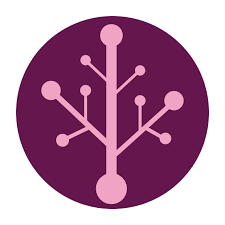As companies face faster, deeper, and more interconnected disruptions, many are turning to strategic foresight to prepare for multiple futures. But in most organizations, this powerful capability remains confined to a small group: the board, the strategy office, or an elite innovation team.
To unlock foresight’s full potential, companies must learn to cascade it.
That means moving from isolated future-gazing exercises to a deeply embedded, organization-wide practice — one that informs decisions from product design to talent planning to customer engagement.
Here’s how to do it — without overwhelming your teams or diluting your vision.
Why Foresight Stalls
Strategic foresight can fail to scale for four common reasons:
- It’s too theoretical and not linked to practical decisions
- It’s owned by a small team and not democratized
- It’s disconnected from operational and financial planning cycles
- Middle managers lack tools and language to act on it
Organizations that overcome these barriers do one thing well: they build an architecture for foresight to flow.
1. Build a Distributed Network of Foresight Catalysts
Instead of centralizing foresight in the strategy unit, leading companies create cross-functional foresight networks — groups of trained employees from across functions, geographies, and seniority levels.
These individuals:
- Track weak signals in their domains
- Facilitate futures dialogues within their teams
- Bridge long-term thinking with operational priorities
At Arup, the global engineering and consulting firm, the Foresight, Research and Innovation team works with regional foresight champions to embed insights across infrastructure, climate, and policy projects. They publish public thought leadership, like 2050 Scenarios, but also run internal participatory labs to support project teams.
How to start: Invite 10–20 early adopters to form a “Futures Guild” or “Signal Scouts Circle.” Provide simple training, templates, and quarterly meetups to exchange insights and stories.
2. Integrate Foresight Into Management Rhythms
For foresight to stick, it must show up where real decisions happen — not just strategy offsites.
| Process | Foresight Infusion Example |
|---|---|
| Annual Strategy Planning | Use scenario narratives and “axes of uncertainty” exercises |
| Budgeting | Test key allocations under contrasting future conditions |
| Risk Reviews | Add quarterly “wild card” or black swan risk stress-testing |
| Performance Reviews | Introduce a “futures fluency” competency for leadership roles |
| Team Offsites | Use the Three Horizons model to reframe challenges |
At Maersk, scenario thinking has been integrated into both strategic planning and risk exercises to assess the long-term resilience of global shipping and logistics models. According to their public climate scenario strategy, foresight tools have been key to shaping decarbonization commitments.
3. Establish a Shared Language and Visual Culture
To cascade foresight effectively, the entire organization must speak a common language. Terms like signals, scenarios, and Horizon 3 must be demystified and widely used.
Support this cultural coherence with:
- Infographics explaining models like Three Horizons or Futures Cones
- Microlearning videos on sensemaking and scenario-building
- Internal newsletters spotlighting trends and weak signals
The UNESCO Futures Literacy Labs initiative serves as a powerful model for democratizing futures education. It empowers participants from governments and organizations to develop a shared vocabulary and greater adaptability to change. (Learn more). UNESCO has also released a comprehensive Futures Literacy Laboratory Playbook.
4. Equip Teams with Lightweight Foresight Kits
You don’t need to train everyone as a futurist. You just need to give people tools to think long-term in their context.
Examples of plug-and-play foresight kits:
- “Your Team in 2030” Canvas: Reflect on what success could look like in a changing world
- Mini-Scenario Cards: Use for 15-minute provocations during team meetings
- Backcasting Templates: For innovation, sustainability, or talent planning exercises
Companies like IKEA have developed internal foresight toolkits as part of their Futures Design practice. These kits allow product and HR teams alike to use foresight in weekly planning — not just in isolated workshops. (IKEA’s approach)
5. Integrate into Leadership Development
To ensure continuity and resilience, foresight must become part of how leaders are selected, developed, and rewarded.
Consider:
- Adding foresight modules to high-potential and executive education programs
- Having leaders shadow a foresight initiative as part of stretch assignments
- Using 360-degree feedback to assess long-term vision and adaptive capacity
The World Economic Forum’s Global Future Councils offer a useful reference here: they involve not only executives but young leaders, academics, and system entrepreneurs to ensure intergenerational and cross-disciplinary futures thinking.
6. Prototype Future Conversations in Every Function
Encourage each function to host at least one future-focused conversation or experiment per quarter.
Examples:
- HR: What is the future of purpose-based work or leadership in our company?
- Legal: What ethical dilemmas might we face with AI deployment?
- Marketing: How might shifting identities and digital trust reshape brand strategy?
- Operations: What disruptions might reshape our logistics or supplier networks?
By linking foresight to real questions in each team’s context, you make it actionable and relevant.
A Foundational Skill: Futures Literacy
Central to these practices is what UNESCO refers to as futures literacy—the capability to envision diverse futures, navigate uncertainty, and leverage the future as a tool for making more informed decisions.
As Riel Miller highlights in his TEDx talk, futures literacy empowers organizations to break free from the illusion of certainty, enabling them to act with greater creativity and resilience. This approach isn’t about predicting the future—it’s about unlocking possibilities. By embracing futures literacy, organizations can enhance their strategic agility and strengthen their ethical foundations.
What to Avoid
To ensure foresight thrives, beware of these common pitfalls:
- ❌ Turning it into a compliance exercise (“Check the trend report box”)
- ❌ Flooding teams with academic language and long reports
- ❌ Creating a foresight unit without building organizational interfaces
- ❌ Cutting foresight during budget contractions — precisely when it’s most needed
How to Know It’s Working
Look for these signals that foresight is cascading effectively:
| Indicator | Observable Sign |
|---|---|
| Cross-functional sharing of trends | Monthly “signal briefs” or internal Slack channels |
| Scenarios used in operational teams | Teams include futures thinking in proposals |
| Internal storytelling evolves | Leaders speak in terms of “next horizon” thinking |
| Decisions tested under uncertainty | Risk tools evolve beyond static matrices |
| Innovation aligns with plausible futures | Pilots reflect long-term scenario logic |
Final Thought
Cascading foresight is not about turning every employee into a futurist.
It’s about embedding a shared habit of attention and intention — pausing to ask what’s changing, what it means, and how we want to respond.
In a world shaped by uncertainty, your true strategic advantage isn’t just foresight from the top. It’s futures fluency across the system.
Because readiness is no longer a department.
It’s a distributed capability.

